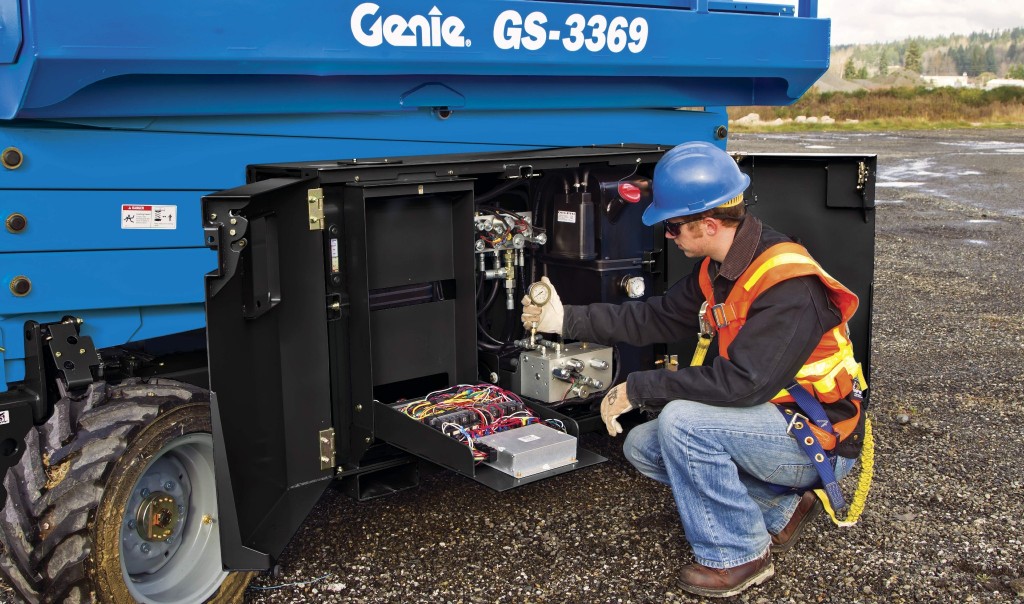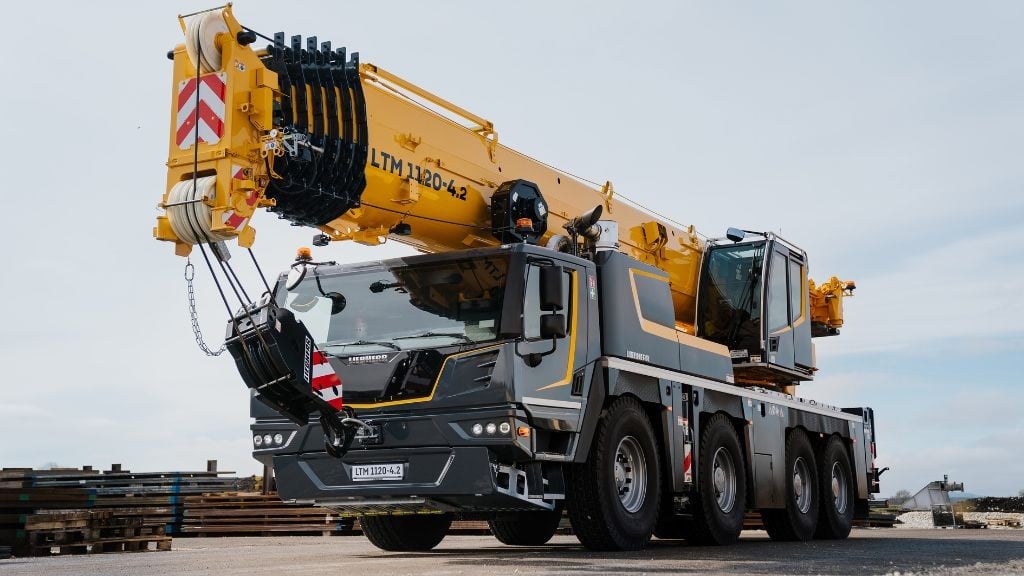
Slab and rough-terrain scissor lifts can be crucial to jobsite productivity, and by adhering to a few daily maintenance and inspection requirements, operators can ensure maximum uptime on jobsites.
Even if it's not always convenient to take the time to perform these duties, operators will find that it is worth every minute if scissor lifts are ready to work and continue to perform in the field – it is easier, and less expensive, to deal with things little by little rather than have something fail and face the consequences.
Preventive maintenance: whose responsibility is it?
Preventive maintenance tasks outlined in the equipment's operator's manual should only be completed by a qualified maintenance technician, authorized by the equipment owner. The equipment operator is not responsible for, nor authorized, to conduct this kind of maintenance.
That being said, operators do have the responsibility for completing inspections prior to, and after, each work shift to ensure the machine is in proper working condition.
Before work begins each day
Prior to start up each day, scissor lift operators must complete pre-operation and workplace inspections, as well as function tests, as outlined in the operators' manuals.
Workplace inspections
A workplace inspection helps the operator determine if the jobsite is a suitable and safe space to operate the scissor lift. This inspection should be performed by the operator prior to moving the scissor lift to the workplace. The operator's manual is a good resource to identify the most common hazards that may be encountered on jobsites, and it's always a good idea to check with the site supervisor or safety manager for any hazards unique to a particular jobsite.
On any aerial worksite, scissor lift operators need to be aware of, and avoid, the following hazardous situations including: drop-offs or holes; bumps, floor obstructions or debris; sloped surfaces; unstable or slippery surfaces; overhead obstructions; high-voltage conductors; inadequate surface support to withstand all forces imposed by the machine; wind and bad weather conditions; the presence of unauthorized personnel; and all other possibly unsafe conditions.
It's important for operators to always remember that it's their responsibility to read and remember the workplace hazards, as well as to watch for and avoid these hazards while moving, setting up and operating MEWPs. When in doubt, operators should pause the job and consult the jobsite supervisor or safety manager.
Pre-operation inspection
The pre-operation inspection is a visual inspection to be performed by the operator prior to each work shift. This inspection is designed to discover if anything is apparently wrong with a machine before the operator performs the function tests. The pre-operation inspection also serves to determine if routine maintenance procedures are required. For example, the operator should inspect the wheels, lifting mechanism, and platform for any damage, which should be repaired prior to use.
Once the repairs are completed, the operator must perform a pre-operation inspection again before going on to the function tests.
Function tests
Function tests are designed to discover any malfunctions before the machine is put into service. The operator must follow the scissor lift manufacturer's step-by-step instructions, found in the operator's manual, to test all machine functions before work can begin. It is important to know that a malfunctioning machine must never be used. If malfunctions are discovered, the machine must be tagged and removed from service.
As a reminder, repairs to damage or malfunctions discovered during the pre-operation inspection or function tests may only be made by a qualified service technician, according to the manufacturer's specifications. After repairs are completed, the operator must perform the pre-operation inspection and function tests again, prior to putting the machine into service.
When work is done for the day
At the end of the work day, there are several important tasks for the operator to complete before going home for the day.
The first step that should be taken is for the operator to lock out the scissor lift. The operator needs to select a parking location on a firm, level surface that is clear of obstructions and traffic. Once the scissor lift is parked, the operator should lower the platform, turn the key switch to the "off" position and remove the key to secure form unauthorized use.
When the machine is secured at the end of the day, the batteries should be charged in accordance with the manufacturer's recommended guidelines outlined in the machine's operator's manual. Proper battery condition is essential to good machine performance and operational safety.
Typically, this task is done by plugging the battery charger into an AC wall outlet and allowing the batteries to completely charge, but it is important to review the manufacturer's specific requirements, which may include: to not use an external charger or booster battery; to charge in a well-ventilated area; to use the proper AC input voltage for charging as indicated on the charger; and only use an authorized battery and charger that is appropriate for the machine's make and model.
When the operator goes to charge the battery, it is important to make sure the batteries are connected before charging.
Additionally, batteries should be in a well-ventilated area; some scissor lift manufacturers may require battery compartments to remain open for the entire charging cycle.
If an operator is charging standard wet batteries with vent caps, it is important to remove the battery vent caps and to check the battery acid level. Operators must wear appropriate personal protection equipment (PPE) to complete this task.
If it is necessary to fill up the batteries, the operator should add enough distilled water to cover the plates, at the bottom of the fill tube, but not overfill prior to the charge cycle. Then, the operator should replace the battery vent caps and connect the battery charger to a grounded AC circuit. The charger will indicate when the battery is fully charged. The operator should then again check the battery acid level when the charging cycle is complete. Operators should check the operator's manual for specific information about the particular machine and batteries as some batteries may be sealed and not require refilling.
It is best for the batteries that they are charged for an extended of time, such as overnight, because opportunity charging - plugging the scissor lift in during lunch time or for short periods of time - can be detrimental to battery longevity. Most scissor lifts have a battery-level indicator on the platform or ground controls. Operators should use this important diagnostic readout to determine the battery level and take the machine out of service when the batteries are low on charge. On many scissor lift makes and models, when the battery level gets too low, machine functions may be disabled.
Preventive maintenance
In addition to the operator's daily tasks, preventive maintenance on scissor lifts should be performed quarterly, annually and every two years by a person trained and qualified to perform maintenance on this type of machine and be done according to the procedures found in the service manual for the machine.
If a MEWP has been out of service for more than three months, it must receive the quarterly inspection before being put back into service.
Sticking to a regular maintenance routine, including the important daily tasks as outlined in the operator's manual, can ensure that a MEWP is ready to go when it is needed it.
Operators should consult the jobsite supervisor and safety manager, as well as the rental house's fleet manager, to get more information on daily maintenance tasks that need to be completed. This will ensure that operators have the right tools, training and resources available to maximize jobsite productivity.
Mike Flanagan is Genie product manager, Terex AWP.
This article originally appeared in the May 2020 issue of Heavy Equipment Guide.



